
Engelmann & Bigelow, Proceedings of the American Academy of Arts and Sciences 3: 298, 1856
Herbarium; Herbarium; Herbarium; Herbarium; Herbarium; Herbarium; Holotype (O. basilaris brachyclada); Herbarium (O. basilaris brachyclada); Herbarium (O. basilaris brachyclada); Herbarium (O. basilaris brachyclada); Herbarium (O. basilaris longiareolata); Herbarium (O. basilaris longiareolata) Herbarium (O. basilaris longiareolata); Herbarium (O. basilaris longiareolata); Isolectotype (O. basilaris ramosa); Herbarium (O. basilaris ramosa); Herbarium (O. basilaris heilii); Herbarium (O. basilaris heilii); Herbarium (O. basilaris heilii); Isolectotype (O. basilaris woodburyi); Holotype (O. humistrata); Herbarium (O. basilaris treleasei); Holotype (O. basilaris whitneyana); Painting; Painting; Painting
Original Description
What is Opuntia basilaris?
Opuntia basilaris is a distinctive prickly pear cactus; it has the archetypical “beaver tail” look. Mature plants form dense clumps 15-30 cm tall and 30-100 cm across. The pads are blue-green or grayish-green and are often wedge-shaped or broadly obovate. Pads are (7)15-17(22) cm long.
Details
Often the cladodes of this prickly pear are fan-shaped, but they may be oval, obovate, or even elongate-obovate. The pads of the major variety of this Opuntia (var basilaris) arise from a single point and form an approximate rosette. The areoles are slightly sunken. This prickly pear has blue-green or gray-green pads that are distinctive and that may have hints of purple in winter or drought, or they may be entirely purple under stress. Though spineless, there are numerous small glochids to be avoided.
Flowers are magenta and about 7-8 cm across, very showy. Fruit is dry. The style is white or pinkish-white, and the stigma is white. Filaments are red, anthers are yellow. The seeds are large and thick (subspheric?) and angular. They measure 6.5-9 × 6.5-7 mm.
O. basilaris basilaris is diploid, but O. basilaris treleasei is triploid.
Other Notes
We recognize five varieties of this Opuntia:
- basilaris (autonym) Engelm. & JM Bigelow
- brachyclada (Griffiths) Munz
- longiareolata (Clover & Jotter) LD Benson
- ramosa Parish
- treleasei (JM Coult.) JM Coult. ex Toumey
Britton and Rose discuss several varieties that are not recognized here including albiflora, coerulea, and nanna. O. basilaris basilaris is by far the most commonly encountered variety. All varieties of this prickly pear are spineless except var treleasei.
Native Americans used O. basilaris as a medicinal plant (Anderson, 2001). Perhaps there was some beneficial effect upon ingestion of the cactus because it contains 3,4-dimethoxyphenethylamine, a compound related to dopamine and mescaline.
O. basilaris is a favorite in gardens because of its unique shape, pad colors, and bright flowers. Some clones from higher altitudes are cold-hardy.

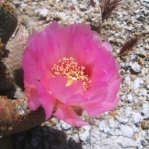
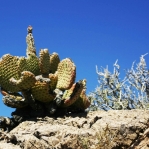
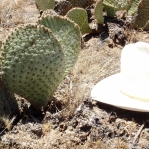
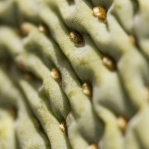
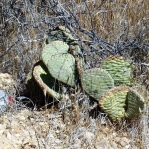
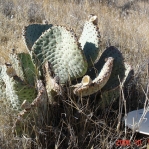
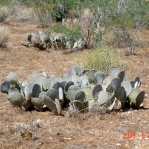
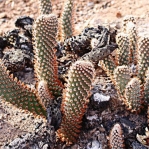
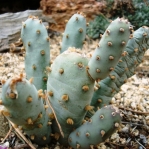
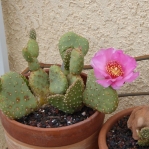
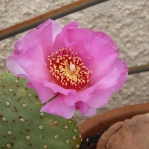
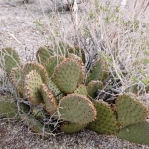
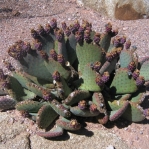
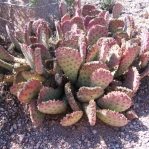
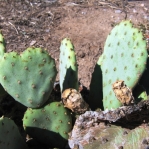
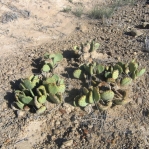
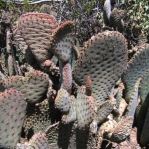
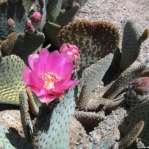
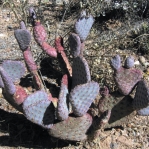
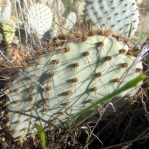
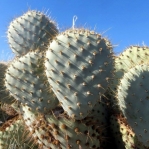
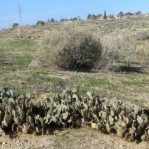
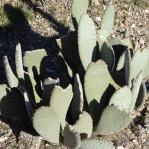
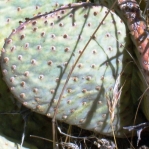
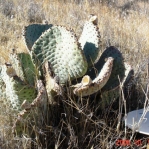
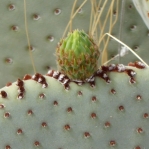
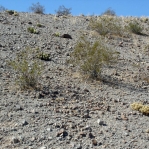
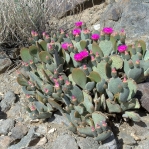
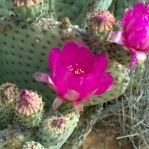
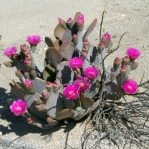
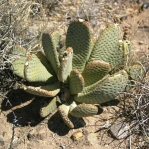
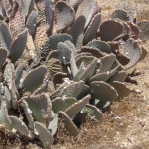
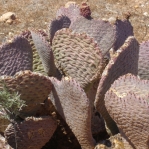
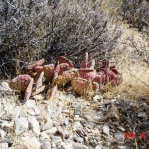
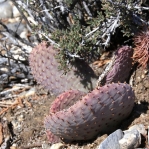
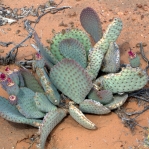
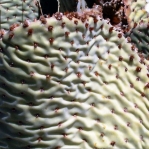
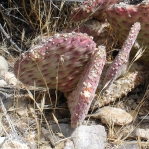
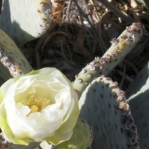
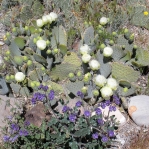
What does dry fruit mean?
There are 2 types of Opuntia fruits.
Some are juicy when ripe, like a berry.
Some are dry when ripe, like a rattle.
Dry fruit refers to those types that produce a rattle type fruit.
Juicy fruits are by far the most common.
I have inherited a collection of basilaris. I am having difficulty telling the varieties apart. Some have names attached to them but I’m not sure they are correct. Is there a printed paper or photos describing with more detail how to tell each one apart?
Hi,
I hope our email answer to your question helped you.
Joe Shaw